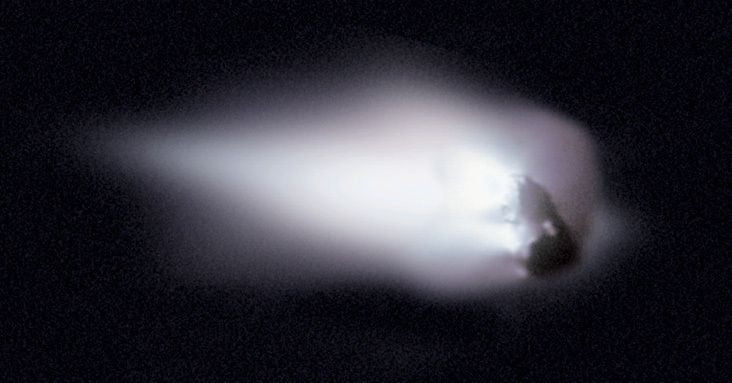Massive Approaching Comet Will Be Visible From Earth, Astronomers Reveal

KEY POINTS
- Comet ATLAS will reach its closest distance from Earth in May
- The comet is getting brighter as it approaches the Sun
- Sky gazers will be able to easily observe the comet due to its brightness
Astronomers estimated that a newly-discovered comet’s atmosphere, which is a gaseous cloud, has reached a diameter of about 720,000 kilometers. They expect the comet to become massive and bright enough to be spotted by the human eye.
The comet, known as C/2019 or ATLAS, was discovered in December last year using the Asteroid Terrestrial-impact Last Alert System (ATLAS) in Hawaii. Since then, astronomers monitoring the comet noted that the cosmic object’s brightness has been increasing, Phys.org reported.
According to the astronomers, the comet’s increasing brightness is caused by its current path towards the Sun. As it gets nearer to the massive star, the heat causes ATLAS to eject material from its frozen surface.
The emissions from the comet have formed a massive gaseous cloud around it. Based on their observations, the astronomers estimated that the atmospheric cloud around ATLAS has already reached a diameter of about 720,000 kilometers. Its size also had a direct effect on the comet’s brightness, which has caused it to increase 4,000 times since February.
Observations on ATLAS’ trajectory revealed that before reaching its closest point to the Sun, the comet would first pass by Earth. According to EarthSky, the comet will reach its closest distance to Earth on May 23. It is expected to fly past the planet from almost 73 million miles away. After visiting Earth’s vicinity, the comet will approach the Sun on May 31 from a distance of almost 24 million miles away.
During its near-Earth approach, the comet’s brightness or visual magnitude is expected to reach +5, which means it will become almost as bright as Venus when viewed from Earth. But, as it continues to get closer to the Sun, astronomers expect the comet to become brighter than Venus.
With a magnitude of +5, sky gazers will be able to observe the comet with binoculars or even with their eyes once it passes Earth. There’s also a chance that the comet might become visible during the daytime if its magnitude reaches -5. According to astronomers, the comet will be best viewed in the Northern Hemisphere during its approach.
© Copyright IBTimes 2025. All rights reserved.





















